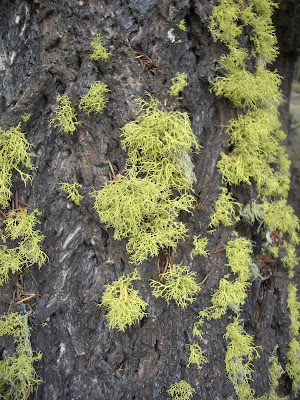A lichen is composed of algae and fungus working together in a symbiotic relationship, where both plants gain benefit and neither are harmed by the relationship. I found this interesting story that describes the symbiotic arrangement of lichens and their hosts in a very simplistic way:
"Once there was a young woman, Alice Algae by name, who lived in the woods. Her house was very run-down and she had no money to fix it up. One day a young gentleman, Freddy Fungus, came along. He was very handy with tools and offered to fix up Alice's house in exchange for some of her fine cooking. A simple agreement was made and Freddy repaired the house and Alice fed Freddy daily while he worked. After a short time they both realize that this was a very good arrangement in deed, and should last longer. So you see, Alice Algae and Freddy Fungus took a "lichen" to each other and lived happily ever after."
Most lichens, though not necessarily tasty, are edible, and a few contain toxic substances.
Lichens are dependent on high relative humidity as they take their moisture from the air rather than the underlying soil so you will notice that the lichens will be more visible after we've had some rain. In summer, when conditions are dry, they look like dry, shriveled things. They become highly flammable when dry.























































